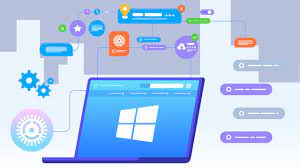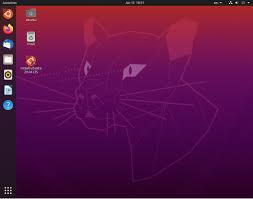Unlocking Efficiency: The Power of Open Source Asset Management
The Power of Open Source Asset Management
Asset management is a critical component of any organisation, ensuring that valuable resources are effectively tracked, maintained, and utilised. In recent years, the adoption of open-source asset management solutions has been on the rise, offering businesses a cost-effective and flexible alternative to proprietary software.
Benefits of Open Source Asset Management
One of the key advantages of open-source asset management systems is their customisability. Organisations can tailor the software to meet their specific needs and workflows, providing a level of flexibility that is often lacking in proprietary solutions.
Cost savings are another significant benefit of open source asset management. By leveraging free and open-source software, businesses can reduce their expenditure on licensing fees and maintenance costs, making it an attractive option for organisations operating on limited budgets.
Popular Open Source Asset Management Tools
- Snipe-IT: A popular open-source asset management system that offers features such as asset tracking, user management, and reporting capabilities.
- GnuCash: While primarily a personal finance tool, GnuCash can also be used for basic asset tracking and management.
- OCS Inventory NG: An open-source inventory and deployment tool that includes asset management features.
The Future of Open Source Asset Management
As businesses continue to embrace the principles of transparency and collaboration inherent in open source software, the future looks bright for open source asset management solutions. With a growing community of developers contributing to these projects, we can expect to see even more innovative features and improvements in the years to come.
In conclusion, open source asset management offers organisations a cost-effective, customisable, and scalable solution for managing their valuable resources. By embracing these tools, businesses can streamline their operations and maximise the efficiency of their assets.
Exploring Open Source Asset Management: Frequently Asked Questions
- What is open source asset management?
- Why should businesses consider using open source asset management solutions?
- How does open source asset management differ from proprietary software?
- What are the key benefits of using open source asset management tools?
- Which are the popular open source asset management tools available in the market?
- How can organisations customise open source asset management systems to suit their needs?
- What is the future outlook for open source asset management?
What is open source asset management?
Open source asset management refers to the practice of using open-source software to track, monitor, and maintain an organisation’s assets. In essence, it involves leveraging free and openly available tools to manage valuable resources such as hardware, software, equipment, and other assets efficiently. Open source asset management solutions provide businesses with the flexibility to customise and adapt the software to meet their specific needs, while also offering cost savings by eliminating licensing fees associated with proprietary software. By embracing open source asset management, organisations can streamline their asset tracking processes, improve resource utilisation, and enhance overall operational efficiency.
Why should businesses consider using open source asset management solutions?
Businesses should consider using open source asset management solutions for a variety of compelling reasons. Firstly, open-source software offers a high level of customisability, allowing organisations to tailor the asset management system to suit their specific needs and workflows. This flexibility ensures that businesses can efficiently track, maintain, and utilise their assets in a way that aligns perfectly with their operations. Additionally, the cost-effectiveness of open source asset management solutions is a significant advantage for businesses looking to reduce expenses. By eliminating licensing fees and lowering maintenance costs associated with proprietary software, organisations can achieve substantial cost savings while still benefiting from robust asset management capabilities. Overall, the combination of customisability, cost savings, and community-driven innovation makes open source asset management an attractive option for businesses seeking efficient and affordable solutions for managing their valuable resources.
How does open source asset management differ from proprietary software?
Open source asset management differs from proprietary software in several key ways. Firstly, open source solutions provide users with the freedom to access, modify, and redistribute the software’s source code, promoting transparency and collaboration within the community. This level of openness enables organisations to customise the software to suit their specific needs, a flexibility often restricted in proprietary systems. Additionally, open source asset management tools typically come without licensing fees, offering cost savings compared to proprietary software. The active community support and continuous development of open source solutions also contribute to a dynamic and evolving ecosystem that prioritises innovation and user empowerment.
What are the key benefits of using open source asset management tools?
When considering the key benefits of using open source asset management tools, several advantages come to light. Firstly, open source solutions offer a high level of customisability, allowing organisations to tailor the software to suit their specific requirements and workflows. This flexibility enables businesses to adapt the tools to their unique asset management needs, enhancing efficiency and productivity. Additionally, cost savings are a significant advantage of open source asset management tools, as they eliminate the need for expensive licensing fees associated with proprietary software. By leveraging free and open-source solutions, organisations can reduce their operational costs while still benefiting from robust asset tracking and management capabilities. Overall, the use of open source asset management tools provides businesses with a cost-effective, adaptable, and scalable solution for optimising their asset management processes.
Which are the popular open source asset management tools available in the market?
When it comes to open source asset management tools, there are several popular options available in the market that cater to the diverse needs of businesses and organisations. Some of the well-known open source asset management tools include Snipe-IT, a comprehensive system offering features like asset tracking and reporting capabilities; GnuCash, which, although primarily a personal finance tool, can also be utilised for basic asset tracking; and OCS Inventory NG, an inventory and deployment tool with built-in asset management functionalities. These tools provide businesses with customisable solutions to effectively track, manage, and optimise their assets while leveraging the benefits of open-source software.
How can organisations customise open source asset management systems to suit their needs?
Organisations can customise open source asset management systems to suit their specific requirements by leveraging the flexibility and modularity inherent in these solutions. Customisation options may include tailoring workflows, adding or removing features, integrating with existing systems, and designing user interfaces to align with internal processes. By collaborating with developers or engaging with the open-source community, organisations can implement customisations that enhance efficiency, improve data accuracy, and meet unique business needs. This adaptability empowers organisations to create a bespoke asset management system that not only meets their current needs but also evolves with their changing requirements over time.
What is the future outlook for open source asset management?
The future outlook for open source asset management is promising, with a growing trend towards increased adoption and development of open-source solutions in this space. As businesses seek more cost-effective and flexible asset management options, the appeal of open-source software continues to rise. With a vibrant community of developers collaborating on projects and contributing new features, we can expect to see continued innovation and enhancements in open source asset management tools. The future holds great potential for these solutions to evolve further, offering organisations even more customisation, scalability, and efficiency in managing their valuable assets.








